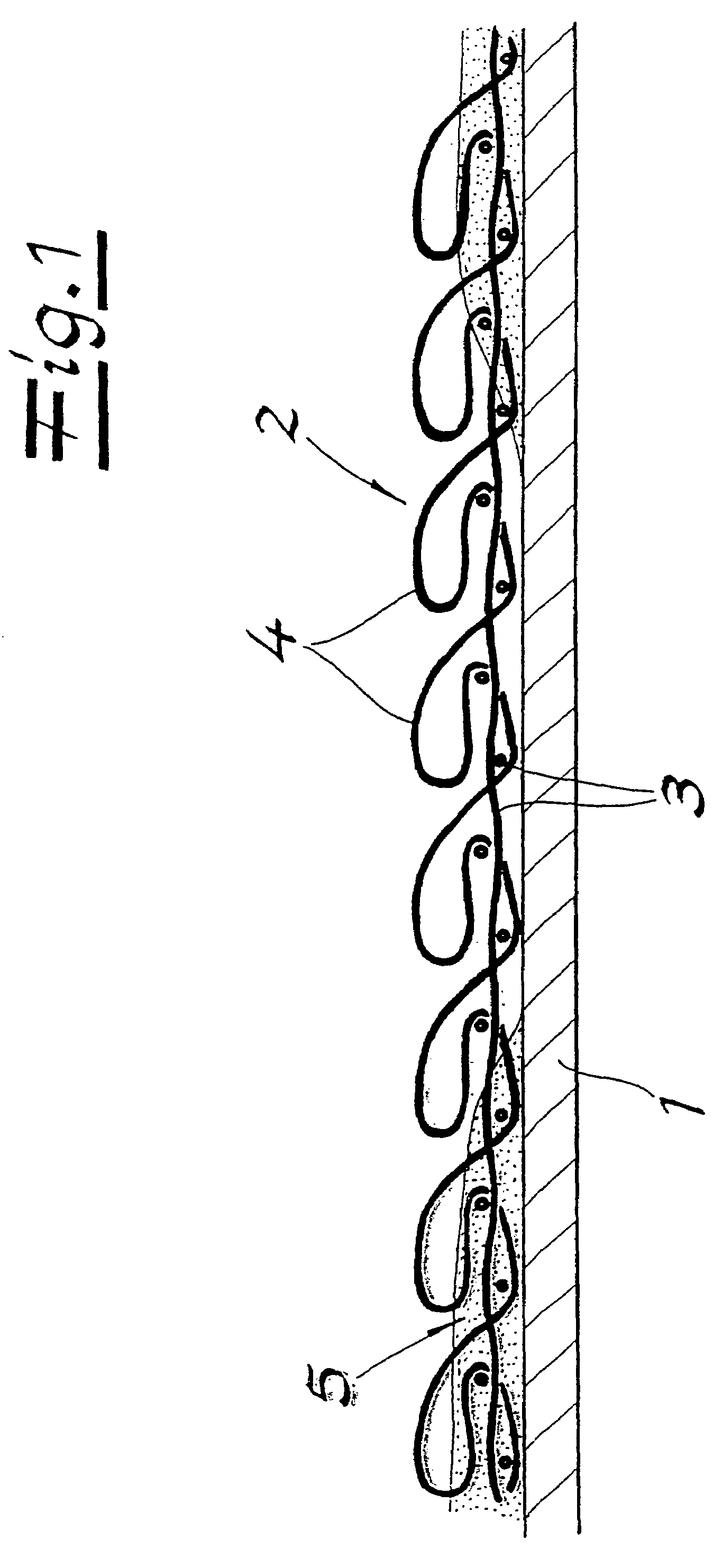Laminate material for hook-and-loop closures
a technology of laminate material and hook-and-loop closure, which is applied in the field of laminate material for hook-and-loop closure, can solve the problems of insufficient hook-and-loop effect, loss of function, and inability to solve to its full extent, and achieve the effect of improving the hook-and-loop effect and high laminate strength
- Summary
- Abstract
- Description
- Claims
- Application Information
AI Technical Summary
Benefits of technology
Problems solved by technology
Method used
Image
Examples
examples
[0032]The properties that are decisive for the functionality of a hook-and-loop closure are characterized by three measurement variables. The decisive measurement variables are opening force, shear force, as well as laminate adhesion between the textile substrate and the carrier film. Opening force is understood to mean the force that must be applied in order to loosen the hook-and-loop hooks of a hook-and-loop closure from the textile substrate. The opening force is determined by means of a tensile test, whereby the manual opening procedure is simulated by means of a tensile force measurement on the hook-and-loop closure, in the opening direction. The force at which the connection between the hook-and-loop hook and the textile substrate is loosened unintentionally, because of an overly great stress, is referred to as the maximal shear force. This force, too, is measured by means of a tensile force measurement, with simulation of the tensile stress that occurs during handling. The l...
PUM
| Property | Measurement | Unit |
|---|---|---|
| width | aaaaa | aaaaa |
| length | aaaaa | aaaaa |
| area | aaaaa | aaaaa |
Abstract
Description
Claims
Application Information
 Login to View More
Login to View More - R&D
- Intellectual Property
- Life Sciences
- Materials
- Tech Scout
- Unparalleled Data Quality
- Higher Quality Content
- 60% Fewer Hallucinations
Browse by: Latest US Patents, China's latest patents, Technical Efficacy Thesaurus, Application Domain, Technology Topic, Popular Technical Reports.
© 2025 PatSnap. All rights reserved.Legal|Privacy policy|Modern Slavery Act Transparency Statement|Sitemap|About US| Contact US: help@patsnap.com



